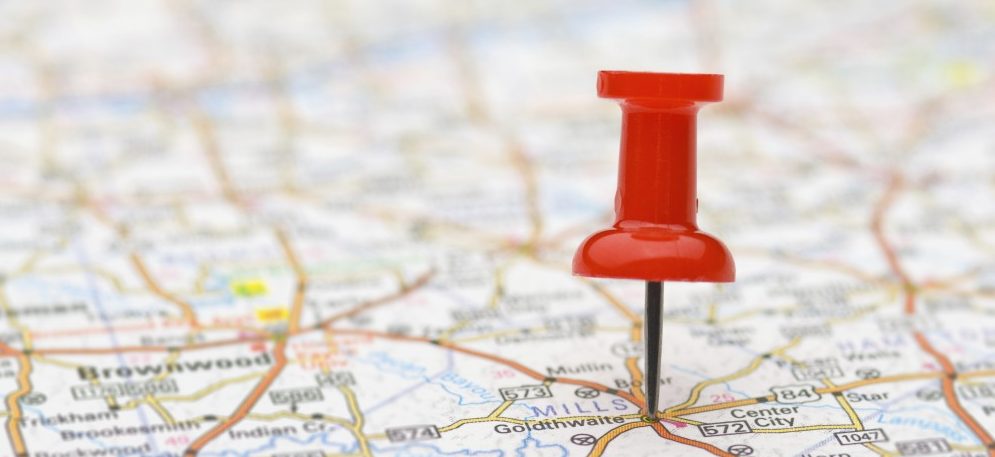 Most non-GIS users hear the term “G-I-S” and think “M-A-P;” that is, they think of GIS, and GIS practitioners, as mapmakers. Most GIS practitioners have unknowingly perpetuated this image. Ask any GIS practitioner what they do for a living and most will say, “I make maps;” however, the reality is that what they do for a living is help people make better decisions through the power of location. This is what I call location intelligence.
Most non-GIS users hear the term “G-I-S” and think “M-A-P;” that is, they think of GIS, and GIS practitioners, as mapmakers. Most GIS practitioners have unknowingly perpetuated this image. Ask any GIS practitioner what they do for a living and most will say, “I make maps;” however, the reality is that what they do for a living is help people make better decisions through the power of location. This is what I call location intelligence.
There is a tremendous growth opportunity for GIS in government across the enterprise. GIS was created to perform spatial analysis. GIS can often be underutilized because non-GIS users sometimes don’t understand the reach of spatial analysis and how it can help them. GIS practitioners need to market and evangelize the power of spatial analysis to help change that image.
You can break down location intelligence into six categories. As you move down this list, the value of the location intelligence increases:
- Understanding Where – A map (could be paper or PDF, but should be an interactive web map) showing where the fire stations are located across a city;
- Measuring Size, Shape and Distribution – A map showing the size, shape and distribution of wetlands across an area would help with wetland protection and preservation;
- Determining How Places Are Related – Showing how certain soil types correspond to flood zones;
- Finding the Best Locations and Paths
- To find the best location for a new fire station, run a drive-time polygon process to show the coverage area for each fire station. The areas that are uncovered are where a new fire station is needed;
- To find the best path for field inspectors – we have fifty inspections to do today and three inspectors. Divide up the inspection locations among each inspector and create the most efficient route to get their work done;
- Detecting and Quantifying Patterns – Crime analysts look at crime data to try to predict where the next one may occur and to help identify known perpetrators;
- Making Predictions – Modeling a watershed can allow for flood predictions based on anticipated rainfall.
Another way to help break the mapmaker image is to rebrand. Most staff in any organization use spreadsheets daily for a multitude of things that bring value to the organization – some say it’s the number one business intelligence (BI) tool. There are GIS software tools that are as easy to use as a spreadsheet; in fact, you can use GIS inside of spreadsheets. Even though spreadsheets are such a useful tool, you don’t see a Spreadsheet Department. Spreadsheet is just the name of the tool, so you don’t have, or name, a department for it. A department should be named based on the function, or value, it serves.
GIS should be thought of as BI with location data and spatial analysis, or location intelligence. A great way to get people to understand the real value and power of GIS is to rebrand your GIS department to something like, Enterprise Location Intelligence. One such example of this is Walgreens, as their GIS department became more strategic and tied to the analytics of the organization, they rebranded it as Enterprise Location Intelligence. If your organization has a BI group, they should consider re-organizing to put GIS with that BI group. I’m seeing real-world examples of this rebrand:
- GIS job title changes to things like:
- Data Analytics Manager
- Content Delivery Manager
- Business and Location Intelligence Manager
- Re-organization putting GIS with BI – a major city has a Smart City initiative, and in response they have reorganized their IT group – they now have a Data Analytics Group that consists of a BI team and their GIS team.
This rebrand, and expansion of the understanding of the true purpose and value of GIS, will not just help the organization realize more ROI for their GIS investment, it will help the GIS practitioners elevate their value to the organization and hence their career.
What can you do? If you’re a GIS practitioner:
- Explore rebranding your title and your GIS group as a start to changing your image from mapmaker to solution provider;
- Evangelize the power of location intelligence – this is actually pretty easy to do – when someone asks for a map, ask them why they need it, probe to find out more about their project, you will probably uncover a need for spatial analysis
- Start to enable others in your organization to become GIS users via easy-to-use web maps and apps, as they use GIS, they will realize its full potential and seek to utilize it more often
If you’re not a GIS practitioner, seek out your GIS team to learn more about their capabilities and how they can help you. And, become a GIS user, there are plenty of GIS tools available that are easy to learn and use.
Adam Carnow is part of the GovLoop Featured Contributor program, where we feature articles by government voices from all across the country (and world!). To see more Featured Contributor posts, click here. You can follow Adam on Twitter or LinkedIn.





Great post Adam! A rebranding is a great way to introduce new ways to create opportunities for location intelligence to improve the outcomes of organizational goals.
This is an exciting time for GIS! The technical capabilities are now available to widen perspectives for everyone within an organization by utilizing location intelligence.
This exciting time for location intelligence opens the door for leadership to emerge. Stand tall and be proud of the work you do. It makes a bigger impact that you realize! Be prepared to introduce others to the benefits of using location intelligence to achieve their business goals. You will be asked soon what else you can do for them because they enjoy their new view of their world because of the location intelligence you provided!
Remember, a leader can hold any position within an organization; a title is not required. The value those leaders provide comes from the impact they can share and the results they can deliver. Good luck and good leadership!
Loved reading this. I’m excited to see where GIS is headed in terms of rebranding!